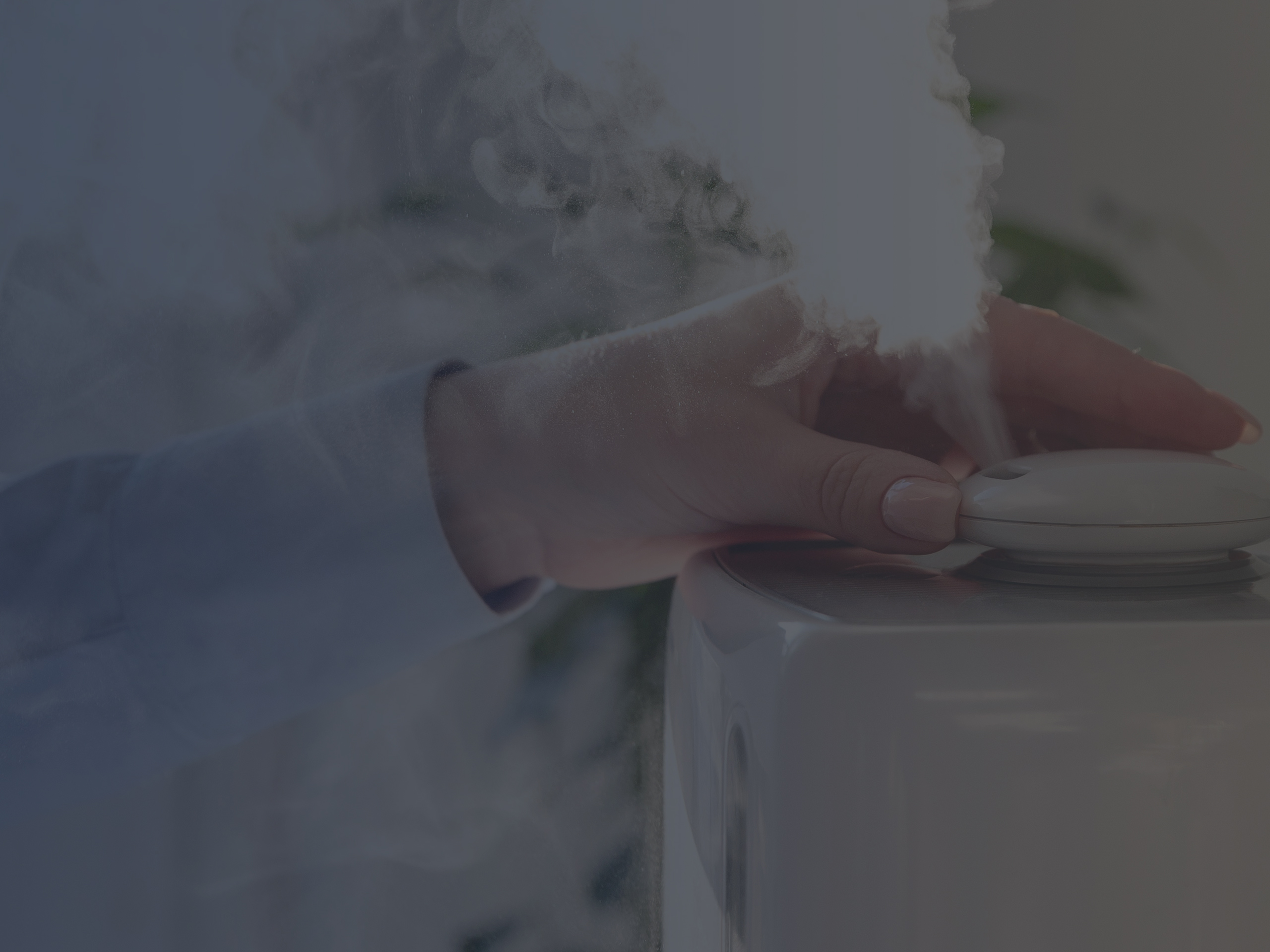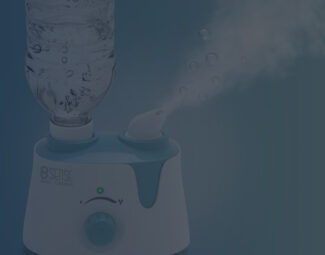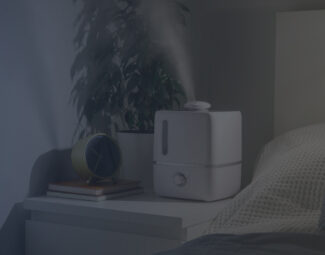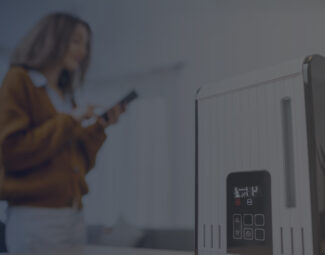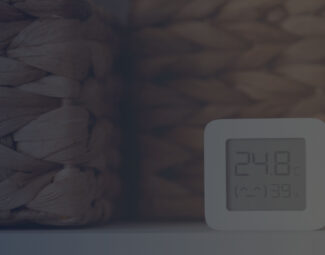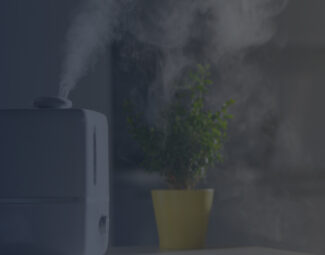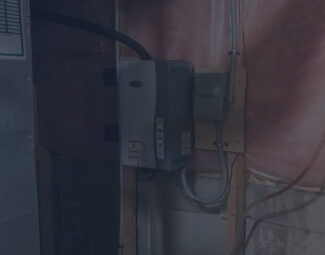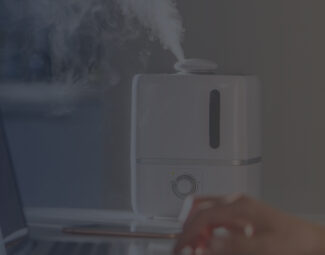I t is almost incredible what a humidifier can do for your health and wellbeing when you are confronting with the effects of dry air. First and foremost, it will save you from chapped lips and itchy skin, and offer comfort during seasonal colds and allergies, but it will make your home a more pleasant and safer environment by reducing bacteria growth.
The good news is that you have so many offers that it is almost impossible not to find a model to match the size of your space. But you should keep in mind that there are different technologies behind these devices and the better you understand how they work, the easier will be for you to make the right decision.
In this article, we will be discussing the difference between two of the most popular types of humidifiers, namely steam and evaporative models. You will find out what is the mechanism behind steam/vapor release, which are the differences between them, and how and where to use them.
Steam Technology
The power of steam is impressive. Remember that it was used to power trains and boats. So, there’s no wonder that these types of devices are usually used for whole-house humidification. However, we must distinguish between two subtypes of steam units:
- Electrode actioned - These models depend on two main components: a cylinder in which the water will be heated and a set of electrodes. The process is simple. Electrical current passes through the electrodes, activating them and allowing a chemical reaction with the minerals in the water, which make the water more conductive. The result is a lower or a higher quantity of steam depending on the intensity of the current. At the same time, drainage is ensured for the water so the minerals can be eliminated and don’t build up inside the canister. Fresh water is provided continuously.
- Resistive - This technology is found in warm mist humidifiers and implies the existence of a resistance which heats up and transfers the heat to the water making it to boil and release steam. The level of steam is increased or lowered by controlling the heat. This method offers more accurate control of the relative humidity. Moreover, as they don’t require the presence of minerals to produce steam, they can work with water filtered through reverse osmosis systems and require less often maintenance works.
These humidification systems can be paired with a furnace and release steam throughout the entire living space, thus providing uniform humidification. As they usually connect directly to a source of water, they don’t come with a water tank, which in most cases proves to be too small and requires to be emptied several times a day. The only thing that needs to be replaced regularly is the cylinder in electrode models, on which the limescale tends to deposit, but this maintenance job doesn’t usually need to be performed earlier than a year.
Benefits
- The steam is germ- and bacteria-free - As the water is boiled, all the microorganisms are killed in the process and will not contaminate the air when the steam is released
- They don’t require filters - The presence of minerals is essential for the electrodes to heat the water, so no filtering is required, even if the water is hard
- Low maintenance - Most units will evacuate the water on their own, thus preventing calcar deposits, so the maintenance is automatic. You will only need to provide a new canister when the old one has become rather crusty
- Can provide humidification for the entire home - Most units designed to cover large spaces use this method and can connect to the HAVC system to reduce energy consumption
Drawbacks
- They are complex devices which makes the installation difficult to perform - Especially when it comes to whole-house models, manufacturers will ask you to allow a professional to do the installation, otherwise, they will cut your warranty.
- They can consume a lot of water - The water needs to circulate to avoid mineral deposits, therefore not all water is turned into steam. Some of it is just wasted.
Evaporative Technology
Some of the safest models, as they don’t require the presence of heat to increase air moisture, they include the following components:
- Water recipient - Its size can vary depending on the unit’s coverage capacity. It usually has a large opening and is detachable, allowing for easy refilling
- Wick filter - Is built either of cloth, paper, or foam and has the purpose to draw water out of the tank and absorb it
- Fan - It blows air over the wick filter, helping the water inside to evaporate and spread around the room in form of vapors
The best thing about evaporative models is that they can self-regulate. Thus, if the humidity level in the room is too high, it is difficult for them to release more dampness, so you will never have to worry that they may over humidify the air and increase the risk of mold growth. Nevertheless, it is recommended to use them with distilled water, as the water isn’t filtered before being released into the air and mineral residue can dissipate under the form of white mist. Some models though allow you to install filters, so look for them if you are going to use tap water, especially if the level of minerals in it is increased (hard water).
Benefits
- They won’t release more moisture than necessary - As explained, if the air cannot hold more water, the evaporation process will stop. All naturally and without requiring the presence of sensors or automatic functions
- They are quiet - Excellent picks for nurseries, they won’t disturb the peace with their low-noise fans
- The vapors are cool and the unit doesn’t pose a danger for kids - No boiling is implied, and this means that neither the vapor nor the unit itself won’t get hot
- Most models are portable - This allows you to decide which room requires more humidification and easily transport the unit to the desired spot
Drawbacks
- The water recipient needs to be refilled often - They don’t connect to a continuous water source, so, when the water is over, you will need to manually refill the tank. Some of them come with large tanks though, so you will get some peace between the refills
- Maintenance should be performed daily and weekly - You will need to provide cleaning and sanitation to prevent bacteria from growing to a dangerous level
- They risk to grow mold and mildew - These fungi can easily appear is regular cleaning isn’t provided
Side-by-Side Comparison
Criteria |
Steam |
Evaporative |
|---|---|---|
Mist/Steam Output |
Strong steam output; it is recommended for whole-house humidification or for very large spaces |
Reduced to moderate; these models usually perform better in a single room which can vary in size from small to large |
Water Consumption |
Electrode models need to drain the water, so there will be some waste. At the same time, they produce steam for very large spaces, so it is normal that the quantity of water required to be higher |
As they are designed mostly for one room, the water consumption rate usually doesn’t overcome a couple of gallons per day |
Power Consumption |
They use electrical power to heat the water and need to cover larges spaces, so the energy consumption is usually higher |
In general, these models draw somewhere under 100 watts, some even under 50W, which are required for the fan to work, as they don’t need to heat the water |
Maintenance |
For electrode models, the only maintenance work is the replacement of the canister once a year, while for resistive models you will have to deal with a water recipient |
The water tank needs to be refilled at least once a few days, depending on the size of the unit, and regular cleaning needs to be performed to prevent the formation of mold and scale |
Sound Level |
Some have an internal fan but it is usually very quiet, so it is unlikely that you will hear them working |
Most models are whisper-quiet and can be used in bedrooms and nurseries |
Runtime |
Electrode units connect directly to a water source, so they can work continuously. On the other hand, models that come with a water recipient depend on its capacity |
Depending on the size of the water recipient, they can run for 1 to 3 days until they automatically shut off |
Installation |
Whole-house units require some practical knowledge and some manufacturers may require you to leave the installation on the hands of an expert, otherwise they may not honor the warranty |
Usually require light assembly or no assembly at all |
Bottom Line
Our advice is to go with a steam model only if you are looking to cover a very large space or an entire house. Only this will justify the costs of purchasing and operating it, which are rather fair considering its capacity. If you only need to increase the RH in a single room, an evaporative model will be more economical, although it will require you to perform maintenance regularly. Furthermore, evaporative technology is safer for baby rooms, as the water doesn’t need to be heated in order to release steam.
As shown, both types are quiet, so the noise will not be a problem unless you have the unluck of buying a really poorly-built one. Just pay attention to the area they can cover and make sure they can handle your space.


